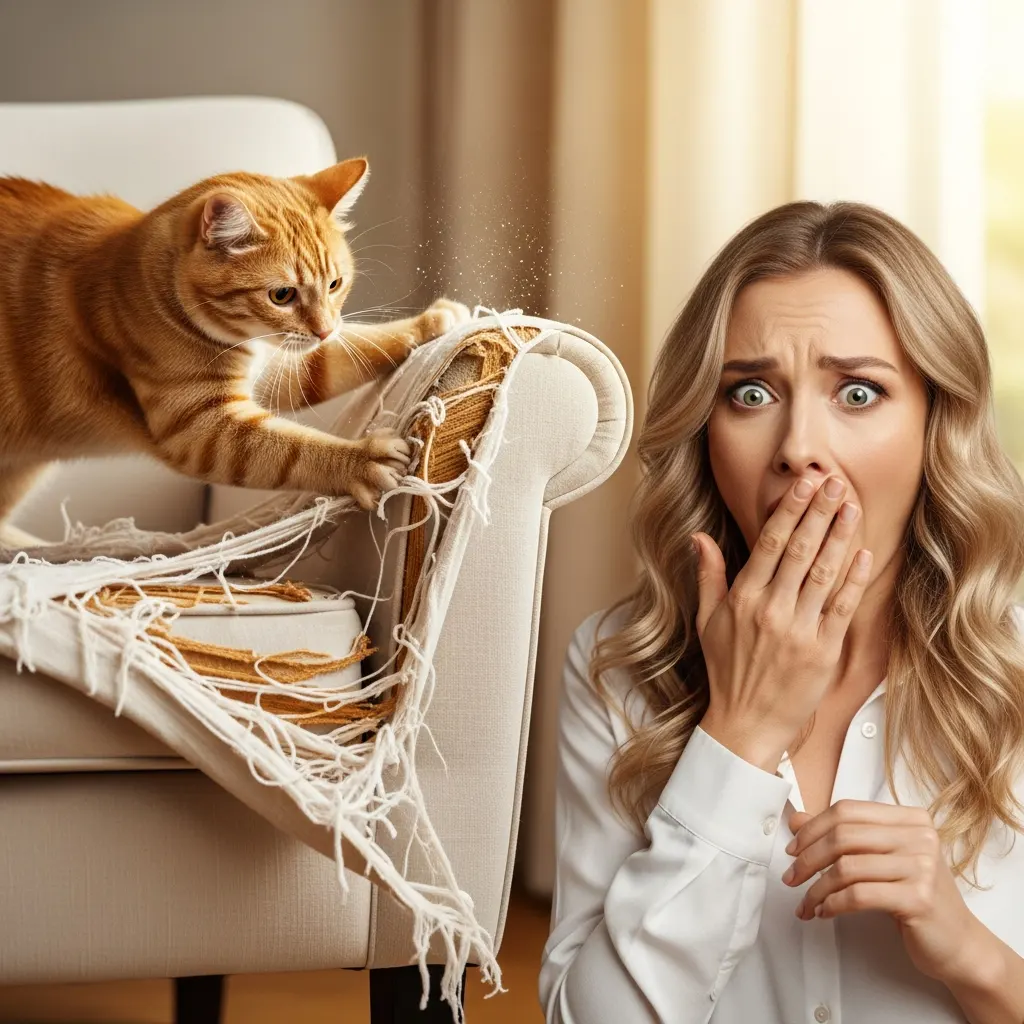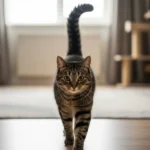Understand Why Cats Scratch Furniture
Scratching is an instinctive behavior cats use to sharpen their claws, stretch their muscles, and leave scent marks. Before diving into cat scratching furniture solutions, it’s crucial to recognize that scratching isn’t “bad” — it’s natural. By understanding how to stop cat scratching furniture naturally, you’ll be better equipped to address the root cause rather than merely treating the symptoms.
Often, cats target couches and armchairs because they’re sturdy, have appealing textures, and reside in high-traffic areas. If you’ve wondered how to stop cat scratching furniture naturally or specifically how to stop cat scratching the couch, consider that your feline is seeking both a workout and a way to mark territory. In multi-cat households, scratching can also be a social signal, so providing multiple outlets is key.
Stress, boredom, and changes in their environment can intensify unwanted scratching. Instead of resorting to drastic measures like declawing, explore safe declaw alternatives for cats. Addressing emotional and environmental triggers ensures that your efforts to curb scratching will be effective and compassionate, ultimately preserving both your furniture and your cat’s well-being.
Provide Attractive Scratching Alternatives
Offering the best scratching post for furniture protection is one of the most successful cat scratching furniture solutions. Vertical posts wrapped in sisal rope mimic tree bark, satisfying your cat’s instinct to climb and scratch upward. Horizontal scratchers made of cardboard or carpet also appeal to cats who prefer ground-level surfaces, diverting attention away from your sofa.
To maximize success, place these alternatives close to problem areas—right beside the couch or next to the armchair where your cat has been scratching. If you’re trying to stop cat scratching the couch, positioning posts in the same spot creates an easy switch. Reward every interaction: a quick treat or praise when your cat uses the post reinforces the idea that posts are superior to upholstery.
Variety matters. Rotate posts, boards, and mats with different textures—wood, carpet, sisal, and cardboard—so your cat remains curious and engaged. Label one area as the “official” scratch zone for furniture scratch guard for cats by placing scratching posts alongside protective guards, giving your feline both function and inspiration to abandon your favorite armchair.
Use Protective Furniture Guards
When you need immediate relief, a best cat scratch furniture protector can shield your upholstery from damage. Clear plastic corner guards and full-panel shields attach easily to sofa edges, blocking claws without altering your décor. These guards for cats act as a physical barrier, discouraging scratching by removing the satisfying surface.
For the stop cat scratching couch strategy, consider double-sided tape or sticky mats on the problem areas. Cats dislike the sticky sensation on their paws, so they’ll seek out their scratching post instead. Aluminum foil strips or crinkly plastic runners also work as DIY cat scratch deterrent methods, creating an unpleasant texture without harming your pet.
Fabric protectors and slipcovers are another option. Durable, machine-washable covers provide peace of mind and can be paired with stylish throws. Look for slipcovers labeled as furniture scratch guard for cats or invest in custom covers designed to repel claws. Combined with training and scratching posts, these guards form a comprehensive shield for your furniture.
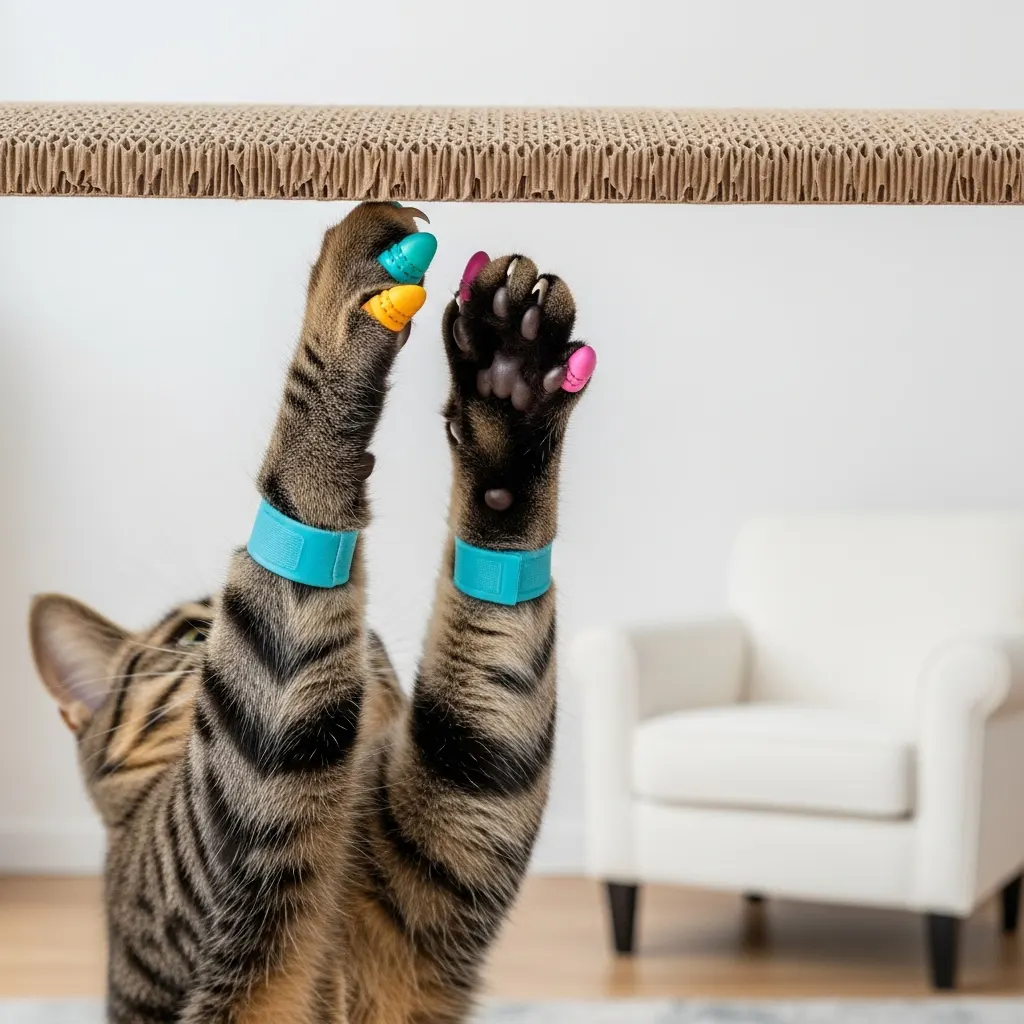
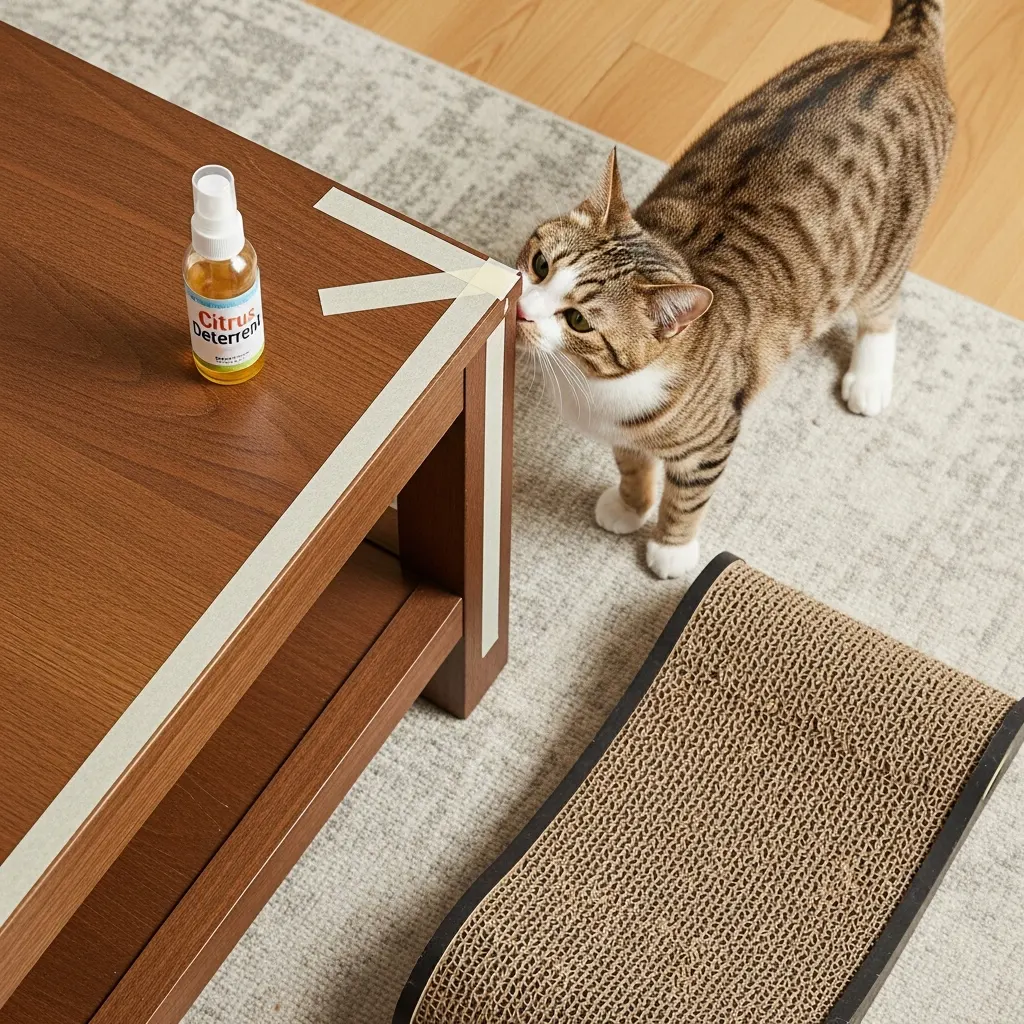
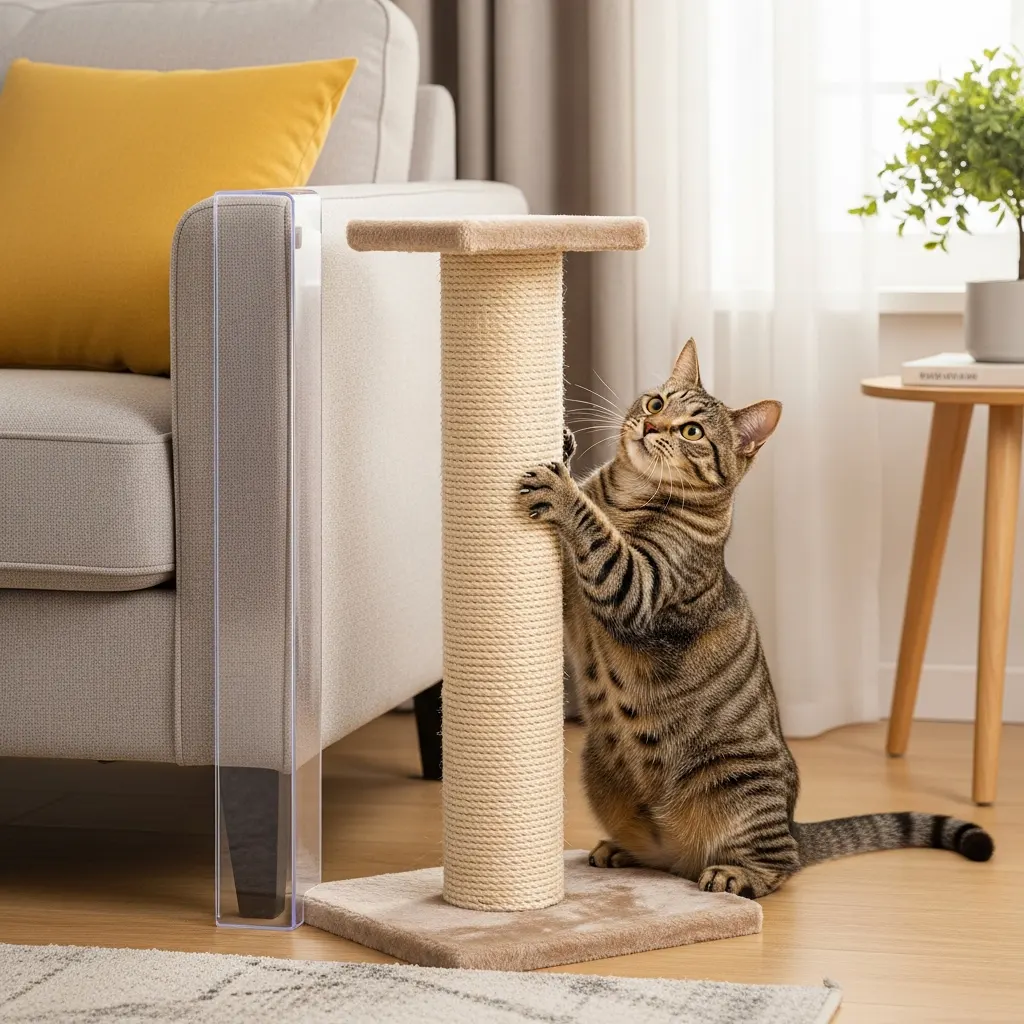
Apply Nail Caps and Soft Claw Covers
Soft plastic nail caps for cats are a gentle declaw alternative that prevents damage while allowing your feline to exhibit normal scratching behavior. These caps slip onto your cat’s trimmed claws and stay in place for several weeks. As your cat scratches, the caps dull the impact, protecting upholstery without altering the cat’s natural instincts.
Nail caps for cats come in various colors and sizes. Applying them is quick—trim your cat’s claws, slide on the caps with a pet-safe adhesive, and reward them with treats for cooperation. When the caps eventually fall off, replace them to maintain protection. This solution works hand-in-paw with scratching posts, giving you both immediate and long-term results.
If nail caps aren’t your preference, consider soft claw covers for cats, which use breathable fabrics to cover claws completely. These sleeves are washable and reusable, combining cat comfort with furniture safety. Both nail caps and soft covers are humane cat scratching furniture solutions that protect your pieces while preserving your cat’s quality of life.
DIY Scratch Deterrent Techniques
For budget-friendly DIY cat scratch deterrent options, craft a citrus-scented spray: mix water with a few drops of orange or lemon essential oil and mist your furniture lightly. Cats typically avoid citrus aromas, making this a natural way to stop cat scratching furniture naturally. Always test a small patch first to ensure no discoloration.
Create homemade scratching pads by stapling burlap or sisal fabric to a sturdy wood base. Place these near high-traffic scratching spots. You can also use double-sided tape or sticky contact paper directly on furniture legs. These DIY cat scratch deterrent methods prevent your cat from damaging upholstery without harsh chemicals.
Another trick is to drape slip-on pieces of aluminum foil or plastic sheeting temporarily. The unfamiliar texture and sound deter your cat from climbing or scratching. Rotate these deterrents with positive options like scratching posts, balancing discouragement with encouragement for a comprehensive cat scratching furniture solution.
Keep Claws Trimmed and Maintained
Regularly trimming your cat’s nails is a preventive measure that complements all other strategies. Shorter nails cause less damage when scratched against furniture surfaces. Schedule claw-trimming sessions every two to three weeks and reward your cat with treats or playtime afterwards to create a positive association.
If you’re unsure how to trim safely, ask your veterinarian or groomer for a demonstration. Use specialized cat nail clippers and clip only the sharp tip, avoiding the quick (the pink inner vein). Filing rough edges with a cat nail file keeps claws smooth and further reduces the chance of snags on upholstery.
Claw maintenance goes beyond trimming. Encourage your cat to scratch on posts by sprinkling catnip or using pheromone sprays on scratching alternatives. By combining healthy nail care with best scratching post for furniture protection, you’ll see fewer shredded sofa corners and happier, well-exercised paws.
Train and Reinforce Desirable Behavior
Positive reinforcement is the cornerstone of behavior modification. When you catch your cat scratching an appropriate surface—whether it’s a post, pad, or protector—immediately offer praise, petting, or a small treat. This clear reward for desirable behavior teaches your cat that redirecting claws to the best scratching post for furniture protection pays off.
Consistency is vital. Redirect your cat each time they approach furniture with claws extended: gently pick them up, place them on the scratching post, and reward any scratching attempt. Over time, your cat learns the difference between couch fabric and approved scratching zones, dramatically reducing unwanted damage.
Finally, be patient and persistent. Behavior change takes time—especially when breaking long-standing habits. Combine all strategies—protective guards, scratching alternatives, nail caps for cats, and natural cat scratch deterrents—for a multi-faceted approach. With love, consistency, and the right tools, you’ll transform your cat into a considerate scratcher and safeguard your furniture for years to come.
